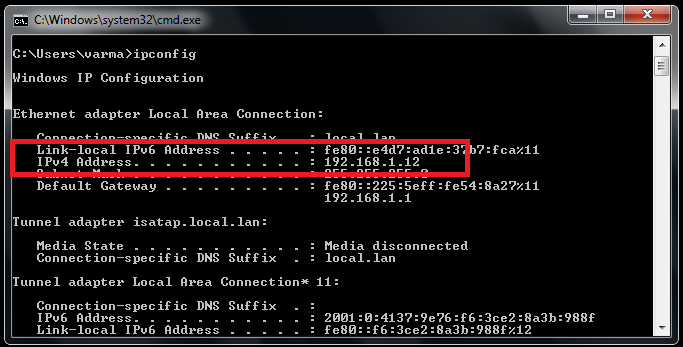
Similar to humans, computers need to have a familiar language to communicate with one another. Many computers nowadays use TCP/IP to do this. Usually, TCP/IP is incorporated into the computers and most of it is automated. If you are setting up your PC to link with other systems, it is good to understand TCP/IP, how it works, and TCP/IP commands.
What is TCP/IP?
The full form of TCP/IP is Transmission Control Protocol/Internet Protocol. It is a series of standard rules that enable computers to speak on a network like WiFi. A data link protocol, TCP/IP is utilized to allow devices and computers to send and receive data over the internet.
IP and TCP are 2 distinct protocols of computer networks. IP gets the address where the data is delivered and TCP is the part that delivers the data when that particular IP address has been found.
Let’s consider the IP address as your contact number given to your phone and TCP is the technology that allows the phone to ring which allows you to talk to another person on the smartphone. Both are different but they are of no use without each other.
How does the TCP/IP work?
When you send a file, photo, or message over the internet, the TCP/IP classifies the information into packets as per the four-layer process. First, the data moves across these layers in one order and later in reverse order as the information is reconstructed on the other end. This model runs as the entire procedure is standardized. Otherwise, the communication will go wild and things will slow down and fast internet services depend on efficiency.
TCP/IP commands
TCP/IP is the key part of the fundamental structure of the system. It enables you to talk with another system just by implementing a program or command. Your system is responsible for what happened next.
Here are some of the TCP/IP commands and their functions described briefly. Some of the commands are used to configure and diagnose your network. Keep in mind while writing from the command swift you can only write one command on each line and press the “Enter” button after each command to implement it.
Arp: It sets, adds, deletes, and shows the IP address, status for all entries, and physical address in the ARP table.
Hostname: It is one of the simplest TCP/IP commands. It displays or sets the name of the existing host system.
Ping: It is the basic TCP/IP command, and it works the same as calling your friend. You take your phone; call your friend expecting that your friend will say “Hello” at the other end. In the same way, computers communicate with one another over the internet with the help of a Ping command. The function of this command is to place a call to some other computer over the network and asks for the answer. Ping command has two choices that it can use to make a call to another computer over the network. It can utilize the IP address or name of the computer.
Ipconfig (windows) / ifconfig (linux): This command shows the data related to the host computer TCP/IP configuration.

Ipconfig/all: It shows the complete configuration data related to TCP/IP connection including gateway, router, DHCP, DNS, and Ethernet adapter in the system.
Ipconfig/renew: This command is used to renew or change the existing IP addresses that you are getting from the DHCP server. The renew command is a fast problem solver in case you are facing connection problems.
Chprtsv: It transforms a print service structure on a server or client machine.
Chnamsv: It changes TCP/IP-based name service structure on the host.
Hostent: This command straightforwardly changed address-mapping records in the structure configuration database
Nslookup: This command is utilized to diagnose DNS issues. If you can reach a source by sating an IP address and not its DNS, you will have a DNS issue.
Netstat: This command displays the TCP/IP protocol sessions, connections and open port connection information
Tracert: This command allows you to examine your TCP/IP system to check if a remote node is accessible or not and the trail utilized to reach it.
Ipconifg /release: The release command enables you to release the IP lease from the DHCP server.
Debug: Interrogates, enables, and disables the TCP/IP debug choice. Debug command has 2 choices i.e. TRACE, which follows the information flows across the TCP/IP software, and the DUMP, which inspects the information of different data schemes. The environment to be examined can be specified.
Display: This commands sets when specified or all ICMP messages are stated in the SUMLOG and at the ODT. You will have 3 message reporting choices i.e. FIRST, ALWAYS, or NEVER message at a particular time.
Display interval: This command defines the time that ICMP, Error, and Reset table data is mentioned to the SUMLOG. The default time is two hours.
Pathping: It is a unique command to windows and is generally a combo of Tracert and Ping commands. This command traces the route to the targeting address then initiates a 25-second test of each router throughout the way, collecting stats on the rate of lost data through each hop.
Route: This command shows the routing table of the computer. A representative computer having one network interface associated with a LAN, with a router is simple and usually doesn’t have any network issues. However, if you are having issues reaching your PC on the network, you can use this command to ensure that the entries in the routing table are right.

Leave a Reply